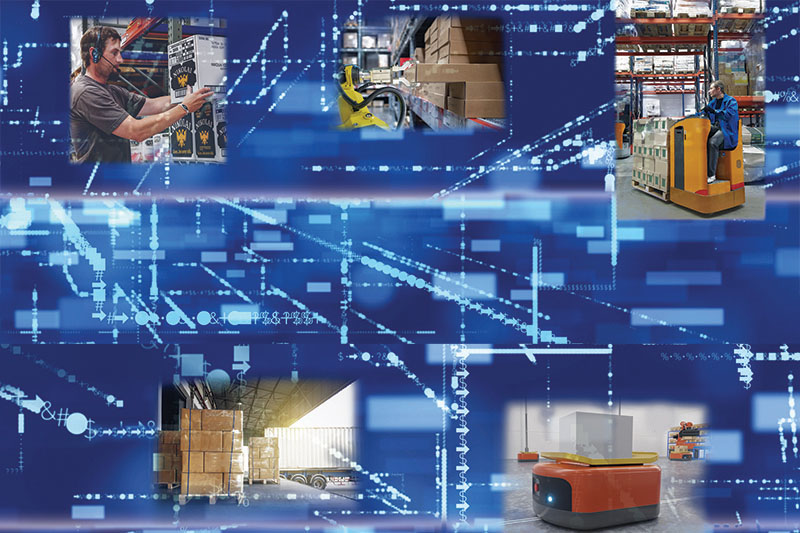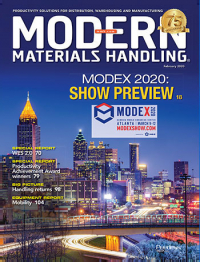Warehouse execution systems 2.0
The first generation of warehouse execution systems (WES) brought a new level of orchestration to automated warehouses. The next generation promises to bring a new level of optimization and productivity to the conventional warehouse. Get ready for WES 2.0.
In June of 2007, I toured a recently opened 552,00-square-foot expansion to American Eagle’s Ottawa, Kan., distribution center. The new space was unique in several ways, at least in my experience at the time, and was a precursor of things to come.
First, while no one was using the terms multi-channel or omni-channel at the time, the facility was designed to manage inventory across three different brands—all stored in a central reserve storage area—and to fulfill orders across multiple sales and distribution channels. Incoming cartons for which there was immediate demand were crossdocked to a store-bound truck. Otherwise, items were sent to reserve storage and picked using multiple pick methodologies, including voice picking, wrist-mounted scanners and pick-to-light, and then inducted onto a cross-belt sorter. At the pack stations, those items might go into mixed SKU cases for store replenishment, or multi-line and single-line orders that were shipped directly to consumers. And, it did so across all three brands.
Second, while no one was using the term warehouse execution system (WES) at the time, a WES software solution from Vargo was the heart of the order fulfillment processes. At that time, a Manhattan Associates warehouse management system (WMS) managed receiving, putaway, inventory and shipping. But the Vargo system managed the picking and packing processes, pulling work through the facility based on what was happening at the pack stations. The idea was to balance the work so all of the pack stations were busy all of the time, rather than having one station overburdened while another was waiting for work.
Fast forward to ProMat 2019. By then, every provider of automated solutions worth their salt offered what we now call a WES. But at the end of the show, I talked to John Schriefer from Lucas Systems, a provider of voice solutions. He described a new software solution that uses algorithms similar to those developed for automated facilities but to manage the conventional processes typically directed by a WMS. They called it a WES, for work execution system.
Just a few booths away, Dan Gilmore, the chief marketing officer for WMS provider Softeon, was also talking about a new take on WES functionality to optimize conventional picking processes, putwalls and autonomous mobile robots in a way that WMS alone could not.
Bringing real-time order allocation and optimization of the convention worker was a new take on WES. It’s a development that Dwight Klappich, research vice president and Gartner fellow, is watching. “What companies like Lucas, Softeon, Manhattan and others are talking about is the ability to apply more robust constraint-based planning techniques to the warehouse,” Klappich says. “These systems are designed to assign work in the most efficient way possible and then dynamically re-assign that work based on changes to what’s happening on the floor.” If the system I saw in 2007 was WES 1.0, then we’re on the verge of WES 2.0.
These solutions do something else as well, which is to put computing power and decision-making capabilities on mobile computing devices at the edge of where work is being performed. It’s an example of bringing edge computing to the materials handling world. Indeed, Zebra has trademarked the term FulfillmentEdge for its new WES solution.
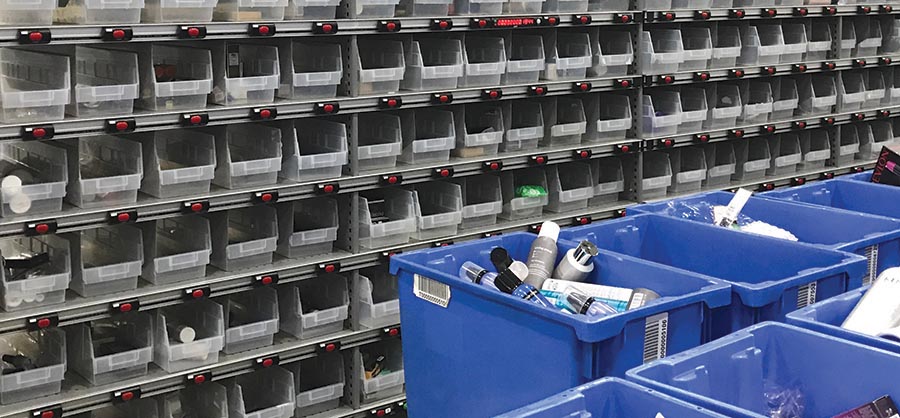
The evolution of WES
Before we talk about where we are, it’s helpful to look back at how we got here. Klappich observes that the capabilities that WES providers brought to automated warehousing “is what manufacturing execution systems (MES) have done for 30 years.” The warehouse is just now catching up with MES.
In fact, the solution Vargo deployed at American Eagle had its roots in MES. “In the 1970’s, one of our principals developed an automatic guided vehicle solution for the military that was a clone of an MES,” says Art Eldred, a client executive at Vargo. “It synchronized and sequenced work, people and equipment to keep a production line running. We applied that same concept to automated warehousing.”
In the view of companies like Vargo, a WMS was an effective system of record for inventory, orders and business rules, but less so when it came to executing orders, especially in facilities with a mix of automated solutions, like goods-to-person pick stations, and conventional processes, like voice-picking, pick-to-cart and putwalls. The new layer of software could orchestrate order fulfillment processes so items picked from a shuttle, AutoStore or Opex solution would arrive at a putwall at the same time as items coming from a three-level pick mezzanine or cart.
What’s more, the system could allocate and re-allocate work to balance workloads across those different areas based on real-time conditions. “WMS preplanned work based on pick patterns,” says Eldred. “But once a trip was planned, the WMS had limited visibility to make dynamic decisions because it didn’t get real-time feedback from the workforce.”
A WES, on the other hand, is closer to the action. By collecting more information from more points, it has real-time visibility into what’s going on down on the floor. Rather than assign a batch of tasks, a WES assigns one task at a time “and doesn’t give a worker the next task until the first is finished,” Eldred explains.
Vargo was early to the party, but it wasn’t alone. Within a few years of my visit to American Eagle, most of the leading OEMs and consulting firms had developed a WES. And while a WES is now practically a necessity in an automated e-fulfillment facility, the next generation work execution system, WES 2.0, is addressing a different issue: How to bring a new level of efficiency in facilities that still rely on highly manual processes, like pick to tote, pick to pallet and pick to cart?
Taking it to the edge
Back when printers, scanners and mobile computers became truly mobile, the pitch was that wireless connectivity allowed you to take devices to the point where the work got done. But those devices were essentially dumb terminals that served as conduits to a warehouse management or enterprise resource planning (ERP) system; that’s where the intelligence resided. Those systems knew what tasks they had assigned, but they were essentially in the dark until an associate scanned a bar code, read a check digit or tapped a light bar when a task was complete. It’s the difference between tracking your delivery on UPS versus waiting for an Uber. With a parcel delivery, you know where your package was last scanned, but not where it’s at in the moment. On the Uber app, you know where your driver is at any given point in time.
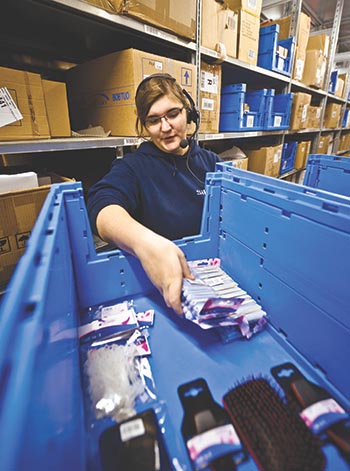 That gap between when a task was sent to the floor and when it was completed created the opening for work execution systems. “Our customers have WMS and ERP systems that are oriented around where inventory is located within a facility,” says Andrew Southgate, global vice president of sales and marketing for Lucas Systems. “What’s been missing is a system that focuses on optimizing the people in the warehouse and doing so in real time.”
That gap between when a task was sent to the floor and when it was completed created the opening for work execution systems. “Our customers have WMS and ERP systems that are oriented around where inventory is located within a facility,” says Andrew Southgate, global vice president of sales and marketing for Lucas Systems. “What’s been missing is a system that focuses on optimizing the people in the warehouse and doing so in real time.”
In this new model, the WMS still manages inventory and receives orders from the order management system. Those orders are then sent to the work execution system for fulfillment. “When we get a pool of orders from the WMS, we’ll figure out the number of orders to the cart, the number of carts we need and then batch them in a way to get the highest pick density and the shortest travel path to meet all of the priorities for those orders,” says Southgate.
What’s more, thanks to the proliferation of sensors and other real-time data gathering technologies, the system, like the Uber app, knows what’s happening in real time. As Gartner’s Klappich puts it, “we now have location awareness in a way we never had it in the past. When I know where every one of my assets is, I can apply more sophistication to where I need people to be.”
Worker-centric
Where earlier systems were oriented around the management of inventory, this new approach is centered on “making the worker on the floor as productive as they can be,” says James Hendrickson, director of product and offering management at Honeywell. Putting intelligence and decision-making capabilities at the edge enables the sophisticated optimization of people and work. “Rather than just dropping in a bar code scanner and doing what the host system tells you, these new solutions provide deeper functionality where the work is being done,” Hendrickson says. “The worker at the edge is who you want to empower.”
There’s another reason for moving analysis and decisions to the edge, notes Andrew Pierce, Zebra’s advanced product manager for WHSE solutions. “When a warehouse is running 20-year-old technologies, like terminal emulation, or is still using paper, the associate is figuring out the best way to execute a task on their own, with mixed results,” he says. “We want to guide and direct the worker in the best way.”
Work execution systems create dynamic workflows based on what’s happening with a facility’s resources and assets at any given point in the day. That allows the system to allocate work in an optimal way. While these systems are in their early stages, as they proliferate and gather more data, they will be able to use artificial intelligence and machine learning to improve performance in the future.
The smart cart
So far, most of this discussion has looked at applying WES to the voice-directed worker. Other solution providers are also looking at how the WES can optimize pick-to-cart operations, or something Fortna refers to as a “smart cart concept.” “The smart cart uses lights and aids to make the workers job at the cart more productive,” explains Russ Meller, Fortna’s vice president for solution design and R&D. “Now, we can utilize WES intelligence to allocate work to the cart.”
Let’s say a batch order requires 1,000 items. Since the system knows where those items are located, it can release orders so an associate with a 10-slot cart gets 10 orders that have items stored next to one another, essentially slotting the cart. Another approach is to dynamically discharge totes as orders are completed, opening up a slot for a new order that can be picked as the cart continues toward packing. “Now, I’m not only assigning the 10 best orders at the start of the process, but I’m looking at the upcoming orders,” says Meller, who likens it to turning tables in a restaurant.
In the future, the system will be able to consider factors like labor productivity and order cut off times when assigning work. “Because we know the number of items to be picked, where they’re located and the productivity of individual workers, we can estimate how long it’ll take to fill the orders,” Meller says. “If I’m an hour before a cut-off time, I can decide whether to optimize the productivity of a cart or distribute the order to two carts to make sure we make the cut-off time.”
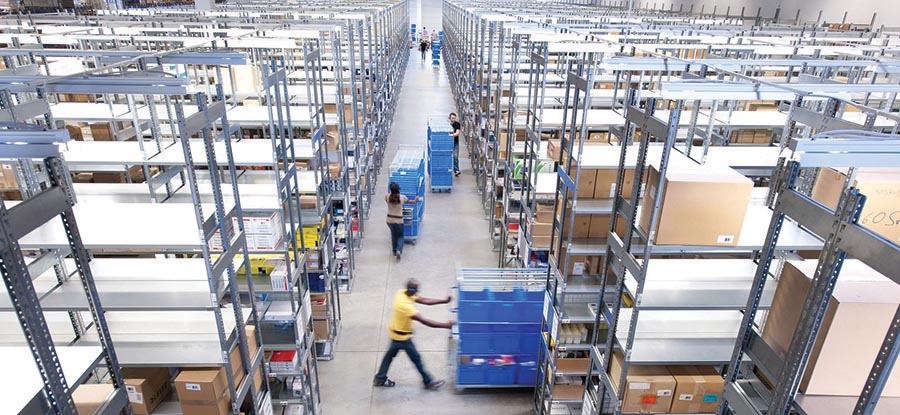
These new tools not only optimize pick paths, but enable strategies to optimize slots on a picking cart.
WMS gets in the game
Warehouse and work execution systems came about because of an unmet need in WMS solutions. “It’s fair to say that WMS solutions looked at processes as sequential steps and didn’t take the big picture view that provides a number of opportunities to take labor out of the distribution center,” says Gilmore. Today, WMS providers like Softeon, Manhattan, JDA and HighJump are making up for lost time. “The principles that drive effectiveness in automated systems can be applied to distribution centers with little to no automation,” says Gilmore. “And, that’s leading to a step-change in WMS technology.”
An example of this new approach in action is something that Softeon calls a “virtual putwall.” It takes a dynamic view of assigning work to a putwall similar to the smart cart example above. “Let’s say you have 10 modules with 50 cubbies each, or 500 cubbies,” Gilmore says. “I could release work for 10 individual modules, or I could create five groups of two modules to optimize batch picking and reduce the number of totes on the conveyor. And, it’s not fixed. Tomorrow, it might be better to do 10 than five.”
A similar evolution has been taking place at Manhattan Associates. “That American Eagle facility you visited was a pioneer in this space,” says Adam Kline, Manhattan’s senior director of product management. Around 2010, Kline was asked to look at what was happening there and see how those concepts could be applied to a WMS.
“What we decided is that the WES vendors were viewing the problem from the automation layer up,” Kline says. “In our view, there’s more than timing the release of work. There’s inventory, there’s people and there’s equipment. As a WMS vendor, we could take a top-down view, because we have full knowledge of the orders, inventory, people and where they’re located.”
The result was “order streaming, which is adjacent to WES,” says Kline. In this new way of thinking, “we can deal with an order on an individual basis. When it comes in, we can hold it until we have a signal from a putwall or another resource that there is capacity available.” It also now includes a layer of software to communicate with the downstream automation. “They are two different components, but created within the WMS,” Kline says. Pick paths are optimized by applying the algorithms developed for transportation management to the warehouse.
WMS’s most compelling pitch could be that there’s just one throat to choke. “Why bring in another vendor if the functionality is already baked into the WMS?” asks Kline. Gilmore agrees. “Clearly there is a market for WES in a heavily automated environment,” he says, “but in conventional facilities, with workers, putwalls and perhaps some robots, WES doesn’t have to come from an automation provider.”
Next steps
Where is this fast-moving space moving next?
In the view of Fortna’s Russ Meller, artificial intelligence and machine learning are coming, as is the ability to make better use of labor based on real-time productivity levels and activity in the warehouse. “What everyone is striving for is visibility that allows you to allocate labor to optimize multiple upstream and downstream processes,” Meller says. “I think that’s where we’re headed.”
Eldred sees the emergence of robotics, especially autonomous mobile robotics, as the next area for warehouse optimization. It’s not without its challenges. “Machines are predictable,” he says. “We can project what a machine will do with the work we put in front of it. We can’t predict what a person can do and that complicates things.” What’s more, there is little standardization in the robots coming to market. Each has its own standards, communication protocols and capabilities. “Clearly, we have work to do,” Eldred says
Companies mentioned in this article:

Article Topics
Software News & Resources
C-suite Interview with Keith Moore, CEO, AutoScheduler.AI: MODEX was a meeting place for innovation C-Suite Interview with Frank Jewell of Datex, Leading the Way in the Material Handling Industry Give your warehouse management systems (WMS) a boost Agility Robotics and Manhattan Associates partner to bring AI-powered humanoid robots into warehouses Siemens, Universal Robots, and Zivid partner to unveil smart robotic picking solution OTTO Motors showcases latest software release for optimizing floor space Rite-Hite ONE digital platform debuts More SoftwareLatest in Materials Handling
Registration open for Pack Expo International 2024 Walmart chooses Swisslog AS/RS and software for third milk processing facility NetLogistik partners with Vuzix subsidiary Moviynt to offer mobility solutions for warehouses Materials Handling Robotics: The new world of heterogeneous robotic integration BSLBATT is looking for new distributors and resellers worldwide Lucas Watson appointed CSO for Körber’s Parcel Logistics business in North America Hyster recognizes Dealers of Distinction for 2023 More Materials HandlingAbout the Author
Subscribe to Materials Handling Magazine

Find out what the world's most innovative companies are doing to improve productivity in their plants and distribution centers.
Start your FREE subscription today.
April 2024 Modern Materials Handling

Latest Resources


